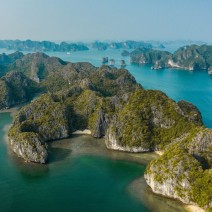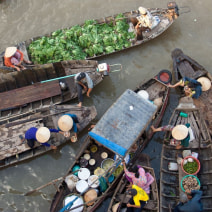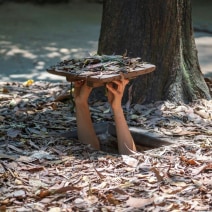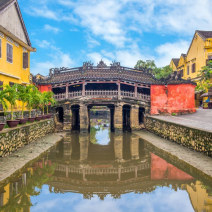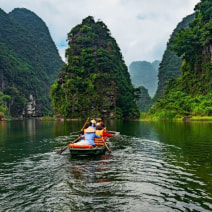Vietnam Travel Guide
Vietnam is a country where ancient traditions, fascinating history and spectacular scenery come together to create an unforgettable experience. Officially the Socialist Republic of Vietnam, it is the easternmost nation on the Indochina Peninsula and home to around 97 million people. Hanoi has been the capital since the reunification of North and South in 1976, while Ho Chi Minh City is the country’s most populous and energetic metropolis.
Vietnam’s past is shaped by more than a thousand years of Chinese rule, the grandeur of imperial dynasties and the legacy of French colonisation. These influences can still be seen today in its architecture, food and cultural heritage. Ho Chi Minh, the revolutionary leader who guided the country towards independence and reunification, remains a national figure of deep significance.
Although the Vietnam War left a lasting impression on the world, the country is defined by much more. From the tranquil beauty of Bai Tu Long Bay and the historic streets of Hoi An, to the imperial splendour of Hue, the vibrant buzz of Hanoi and the lush waterways of the Mekong Delta, Vietnam offers a wealth of experiences for every traveller.
We’ve outlined some helpful information below to support you as you plan your holiday to Vietnam.

Time Zone & Currency
The currency in Vietnam is the dong and is seven hours ahead of Greenwich Mean Time (GMT).

Weather in Vietnam
Vietnam’s long and narrow shape means its climate varies widely, with cooler winters in the north, tropical weather in the centre and hot and humid conditions with wet and dry seasons in the south.

Reading For Your Trip To Vietnam
The Quiet American by Graham Greene
Vietnam Rising Dragon by Bill Hayton
Miss Saigon by Claude-Michel Schönberg & Alain Boublil
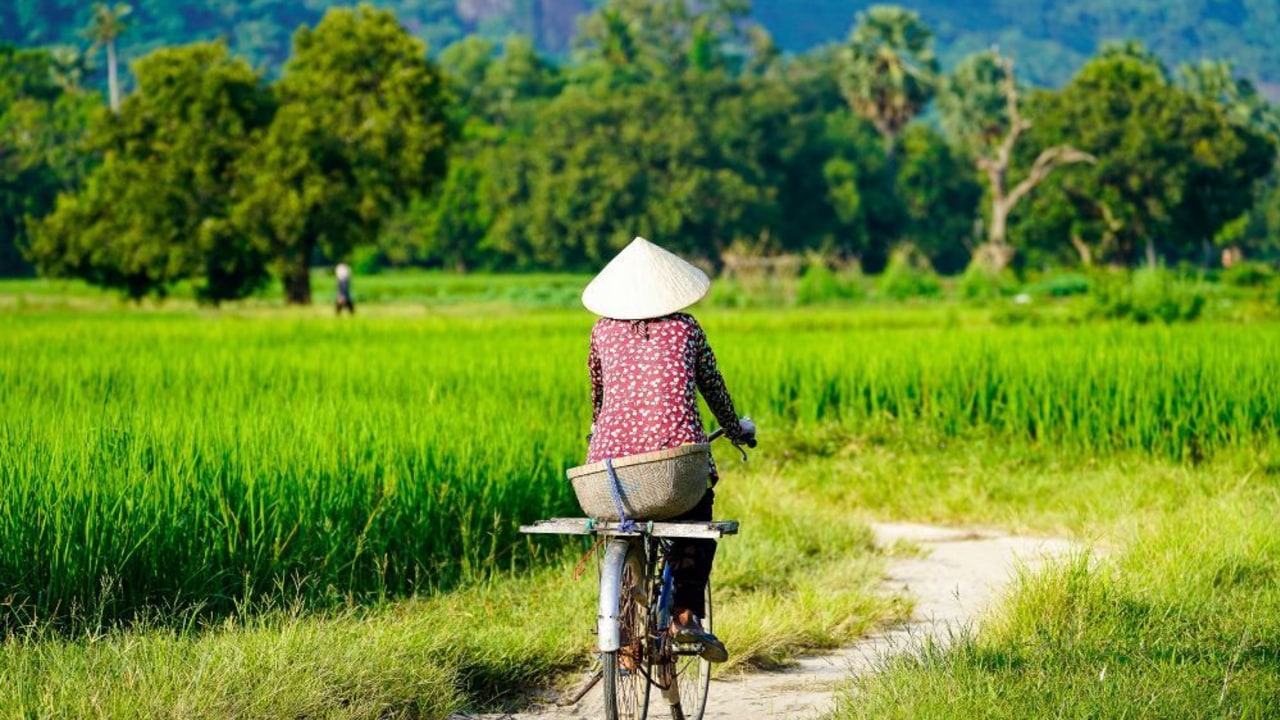
Best time to go to Vietnam
Although Vietnam can be visited year-round, our trips take place in February, March, April, May, June, September, October and November, when the weather is generally warm, dry and comfortable for exploring. Travelling during these months offers ideal conditions for sightseeing, cultural experiences and enjoying Vietnam’s diverse landscapes.
Top activities and sights in Vietnam
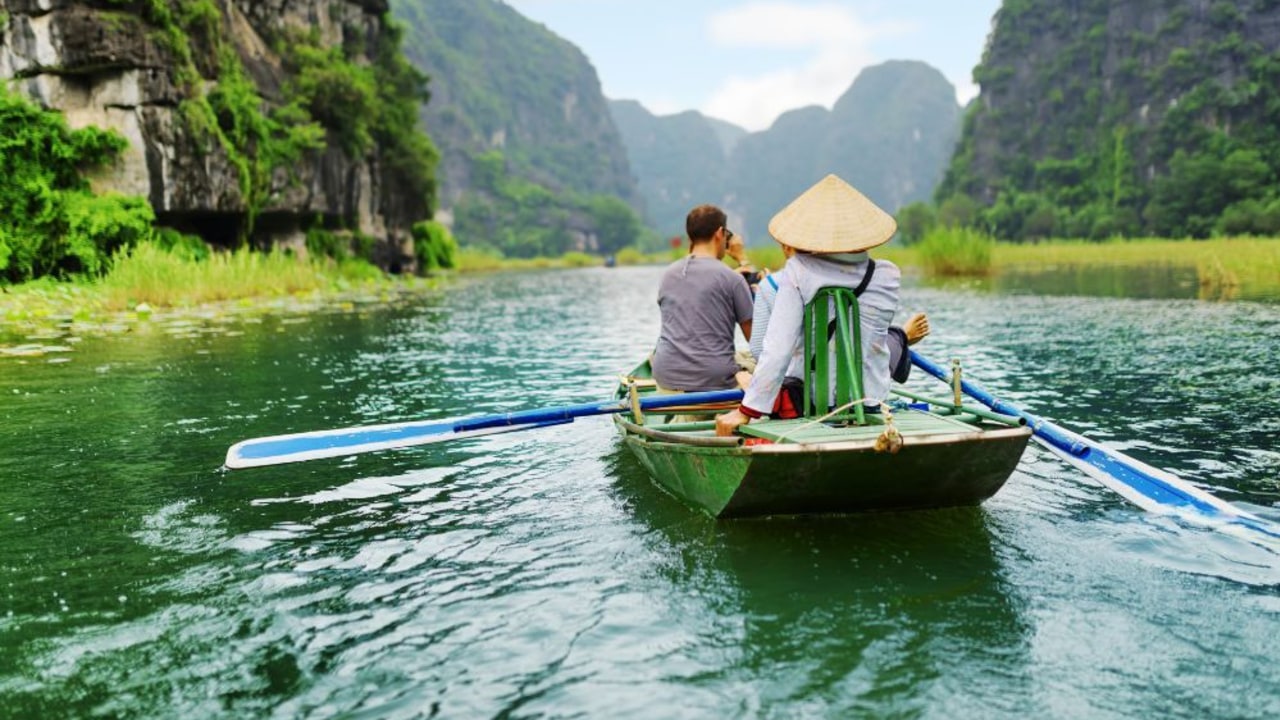
What to expect on a Vietnam holiday
From north to south, Vietnam offers an incredible variety of experiences. In the north, you can wander through the historic streets of Hanoi or take in the beauty of Bai Tu Long Bay. Central Vietnam is home to the ancient town of Hoi An and the imperial city of Hue, while in the south you’ll find the vibrant energy of Ho Chi Minh City and the lush waterways of the Mekong Delta. Each region has its own character, traditions and landscapes, making Vietnam a country full of contrasts and discoveries.
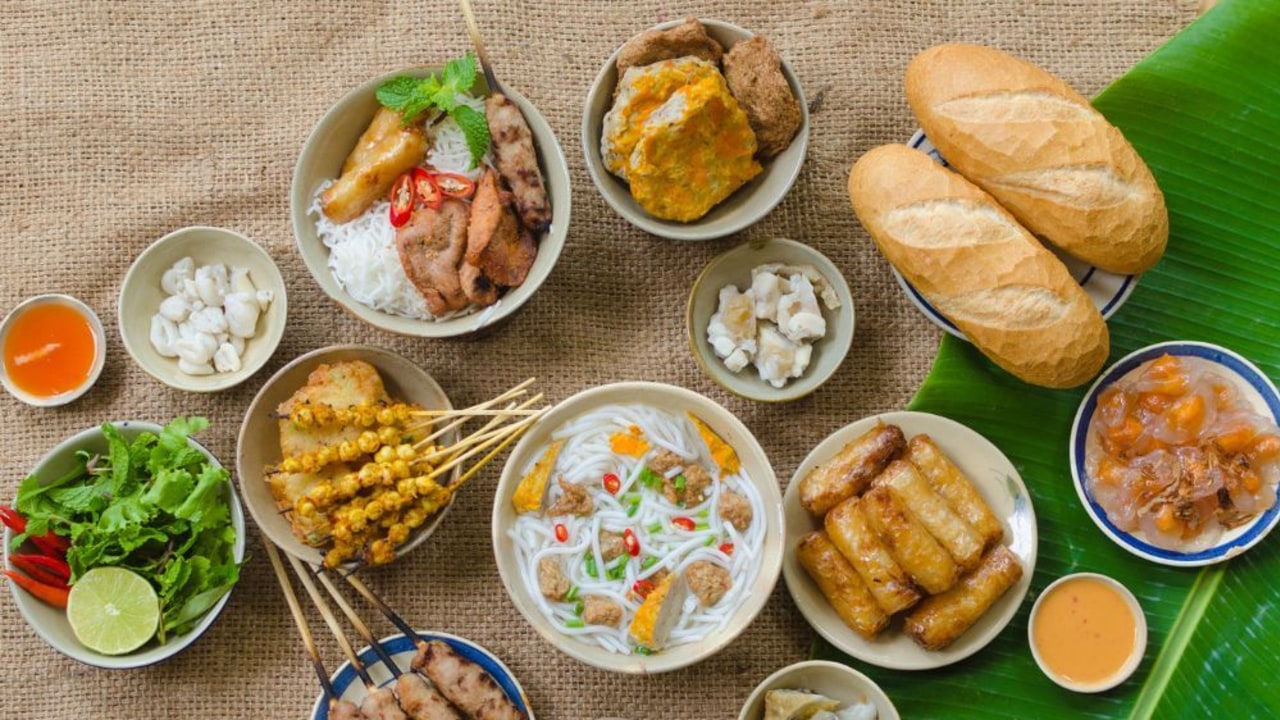
Food and drink in Vietnam
Vietnamese cuisine is celebrated for its fresh flavours, balance of textures and creative combinations, influenced by French, Chinese and Thai traditions.Some must-try dishes include:
- Pho: Perhaps the country’s most iconic dish, this aromatic noodle soup is served with chicken or beef, fresh herbs and crunchy bean sprouts.
- Banh Mi: A crisp baguette filled with meats, pickled vegetables, herbs and a touch of chilli sauce — a delicious legacy of French colonial influence.
- Spring Rolls: Whether fresh or fried, these rolls are packed with vegetables, herbs and often shrimp or pork, accompanied by a tasty dipping sauce.
- Bun Cha: Grilled pork served with vermicelli noodles, herbs, lettuce and a tangy dipping sauce — a true northern speciality.
- Vietnamese Coffee: Rich, strong and often sweetened with condensed milk, this distinctive coffee is enjoyed hot or iced.
While Western dishes are readily available in the main tourist centres, the authentic flavours of Vietnam are a highlight in themselves, offering a memorable blend of freshness, tradition and regional variety.
Vietnam Travel Guide FAQs
What should I know about Vietnam's history?
Vietnam’s past is a fascinating mix of dynasties, foreign influence, and resilience. In the 3rd century BC, the Chinese Qin Dynasty took control, beginning more than a thousand years of Chinese rule until independence was won in 939 AD by the general Ngo Quyen. Over the centuries, homegrown dynasties such as the Ly, Tran, and Le shaped the nation, though there were brief returns of Chinese control. By the 1500s, the Portuguese were the first Europeans to set foot in Vietnam, and later, in the late 19th century, the French established their colony of Indochina. French influence can still be seen today in Vietnam’s charming colonial architecture, baguettes and coffee culture, and even in religion. During the Second World War, Japan occupied the country, and nationalist leader Ho Chi Minh rallied support for independence. After the war, France tried to regain control, sparking the First Indochina War. This eventually led to the division of the country into communist North and non-communist South—an uneasy split that escalated into the Vietnam War (1955–1975), with the USA heavily involved on the side of the South. The years that followed were tough, but in 1986, Vietnam launched economic reforms known as Doi Moi (“innovation” or “renovation”), which have transformed the country into the dynamic, welcoming destination travellers enjoy today.
Is it safe to travel to Vietnam?
Serious or violent crimes against foreigners in Vietnam are rare, but visitors should remain vigilant for petty theft, especially in larger cities such as Hanoi and Ho Chi Minh City, and when travelling on public transport. Never leave belongings unattended and always maintain a firm grip on cameras and shoulder bags. At some tourist sites you may encounter some insistent souvenir sellers. A polite “No, thank you” with a smile usually will suffice.Leave your expensive items at home and always use hotel safety deposit boxes or in-room safes for your valuables.
Do I need a visa for Vietnam?
Irish and UK citizens require a visa to enter Vietnam. Passports must be valid for at least 6 months. Remember to bring a printed copy of your Tourist Visa approval email. If your visa is stamped in your passport, no additional documentation is required.
Is the water in Vietnam safe to drink?
It is not advisable to drink tap water. Bottled mineral water is safe and available everywhere. All hotels provide a complimentary bottle of local mineral water, per person, in the room. Ice is generally okay in good standard hotels and restaurants but it is best to avoid it at street stalls or in rural areas. Some minor stomach problems are always possible when travelling in exotic countries, so bring a supply of your usual anti-diarrhoea medicine.
What should I pack for my trip to Vietnam?
There aren’t any strict cultural rules about what you can or can’t wear in Vietnam, but comfort and practicality are key. The climate varies depending on when and where you travel, so packing a mix of clothing is wise.
Northern Vietnam (October–March): It can get surprisingly cool, so bring layers such as a fleece or light jacket.
Central & Southern Vietnam (most of the year): Lightweight clothing—T-shirts, shorts, flip-flops or sandals—will be your daily go-to.
Evenings: Covering your arms and legs helps protect against mosquito bites.
Rainy season: An umbrella or lightweight raincoat will be handy for both sudden downpours and strong sunshine.
Cultural visits: When exploring temples, pagodas or monasteries, bring clothing that covers your shoulders and knees.
Here’s a helpful packing checklist:
- Day bag or small rucksack
- Mobile phone & charger
- Camera & charger
- Sun cream Insect repellent with DEET Small first aid kit (paracetamol, antihistamines, Imodium, plasters, etc.)
- Comfortable walking shoes
- Flip-flops or sandals
- Broad-brimmed sun hat & sunglasses
- Jacket, cardigan, or fleece for cooler evenings
- Lightweight raincoat (during rainy season)
- Shorts, long trousers, and a mix of short- and long-sleeved T-shirts
- Swimming costume
Useful Links
- For up-to-date information regarding entry into Vietnam please see: www.dfa.ie
- Official Vietnam Tourism Board: vietnam.travel
